|
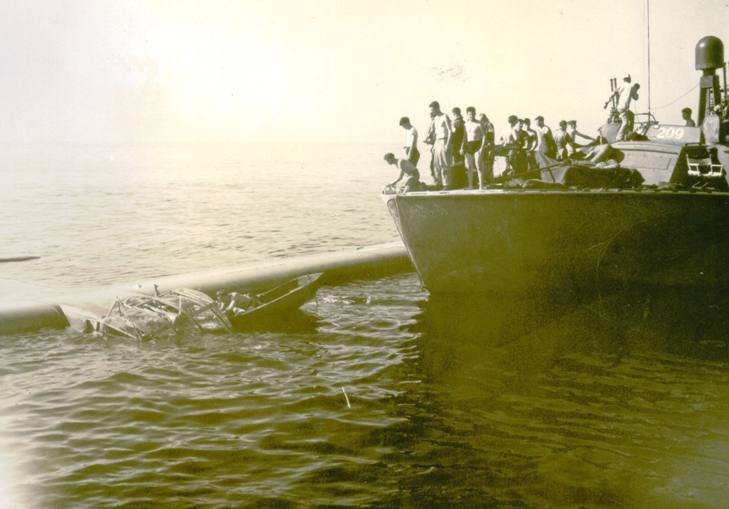 | After spending the night of August 14th and the early hours of August 15th (Operation Dragoon's D-Day) guiding the paratroop transports into Southern France, PT 209 was tasked with a similar mission in daylight: provide a visual beacon to glider-towing transports who were bringing more men and material to the fight. |
|
C-47's would, using a long cable, tow wooden gliders filled with soldiers and equipment into enemy territory and then release them close to the target. The pilots of these engineless craft then had to make a one-chance hope-you-get-it-right landing in a designated area. Once they made it safely to the ground, everyone (including the pilots) geared up and joined the fight. While on station, Pop watched as one of the gliders crashed into the Mediterranean right in front of him; PT 209 quickly moved into help rescue the crew and cargo.
| 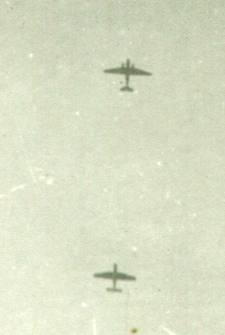 |
|
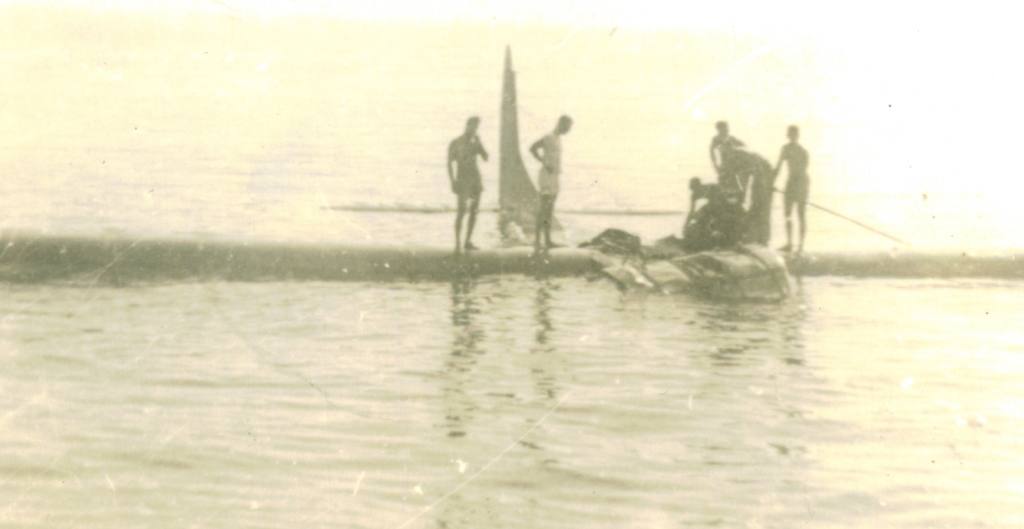 | There are written accounts of this incident from several sources and they seem to agree on most points. The first account is a a letter Jim wrote to Colonel George Walton, coauthor of The Champagne Campaign. The book details the invasion of Southern France and Pop wrote to both compliment the work and offer his own memorable experiences from Operation Dragoon. Below is taken directly from that letter: |
|
| "With daylight, the tow planes began delivering the Horsas and CG-4A's in great numbers and continued throughout the day. As a beacon during daylight, aside from visual observation from the air, we used a long-barreled high intensity flashing light. | 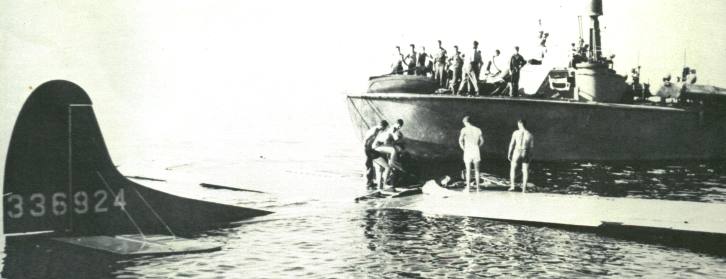 |
|
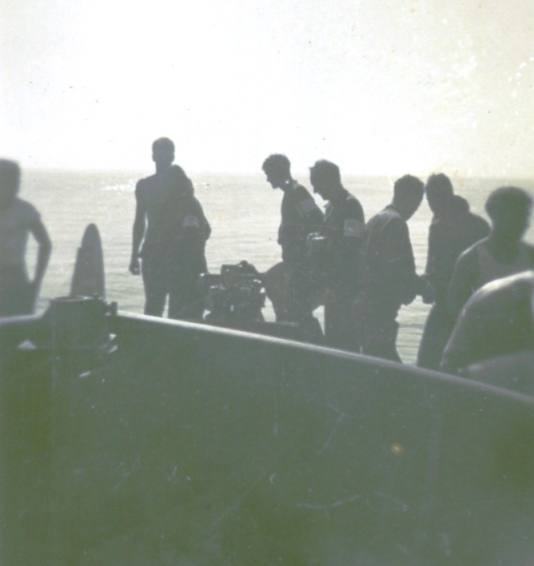 | "During mid-afternoon one of the CG-4A's developed severe tail flutter some distance out and the tow-plane cut the tow-line about a mile out because it was questionable that the airframe would hold together. This glider spiraled down and crash landed about 100 yards from our station. The 14 troopers survived and were brought aboard and treated for injuries. Since we could not leave station, we transferred the troopers to our escort and they were delivered to the Army base hospital at Calvi. |
|
"After diving for weapons recovery, we attempted to sink the glider with automatic weapons fire but could not cause it to sink. At this point we returned to base for fuel and for generator replacement."
To my knowledge, the photos from PT-209 were taken by Pop; the ones looking towards PT 209 were taken by Michael Kalausky, who was on 209's escort, PT 562. | 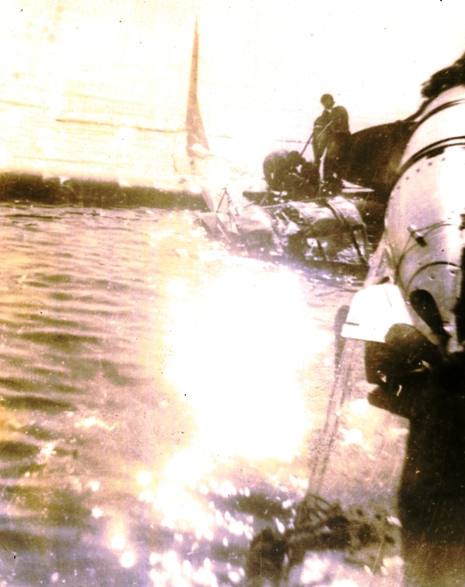 |
|
| In addition to this letter, Jim and Henry Beazley traded correspondence with the newsletter Silent Wings, which was the journal of the National WWII Glider Pilots Association. They had discovered the photographs but had no knowledge of the incident. Jim, fellow sailor Hen Beazley and other sailors from the 209 were contacted through the PT Boat Association for their memories of the incident. Both Beazley and Stanton sent letters that were printed in a follow up article that Hen shared with me. From Jim's letter: |
|
"When daylight came on August 15, the sky filled up with C-47's towing CG-4A gliders. It was a very impressive armada.
"During the late morning I was in the chart room verifying out radar fix when I heard people shouting 'one of them is coming down!' I ran topside and saw a CG-4A in a shallow glide approaching us. The approach was fine but when the fixed landing gear hit the water, the glider stopped like it had hit a stone wall. The tail rose up abruptly, then it settled down about half-submerged.
"The troops inside all got out and stood on the wings. I was told that the glider had developed a severe vibration and that the glider pilot had talked to the tow plane who told him to hold on a little longer until they reached our position so that they could be picked up. Apparently the glider pilot was concerned that the glider would break up in the air.
"As we approached we cut loose our rope nets and helped the troopers climb aboard. As I remember there was one serious eye injury and a broken arm. The rest had minor or no injuries. One recollection that I have is the utter frustration of the soldiers. They had been training for the invasion so long and then had to miss it by half a mile! Because of the injuries we radioed for instructions. We were ordered to stay on station and transfer the troops to the other PT boat who would take them to medical facilities in Corsica, which was done.
Some of our crew swam to the glider and recovered a number of M-1 rifles and field packs. We tried to sink the glider with 20mm and 40mm fire but finally gave up when it showed no signs of sinking." | |
|
| Henry Beazley recalled a different reason for the glider coming down: "The particular glider in question experienced some difficulty, a glass canopy in the nose apparently collapsed, causing drag on the tow plane and the glider had to be released. We happened to be in the position to affect a rescue.
"One of the things I vividly remember was one of the paratroopers becoming quite emotional due to the fact that he had made many jumps in preparation for this day and had to end up coming down in the water in this manner.
"There was one other thing I recall. After our basic assignment was complete the glider had stayed in our general area and late in the day we took it upon ourselves to try and sink it, or whatever!
"Whether these were orders from higher up I don't know but it was an impossible task. If I recall there was a strut or laminated timber from tip to tip in the wing and this kept the glider afloat. About all we were able to accomplish was to blow the tail away and tear fabric." |
|
| A copy of this Kalausky photograph appeared in the Victor Chun book American PT Boats in World War II and the Frank D. Johnson book United States PT-Boats of World War II. The photo captions in these books offer a third possibility for the glider's crash landing: it was all an accident. From Chun's book: | 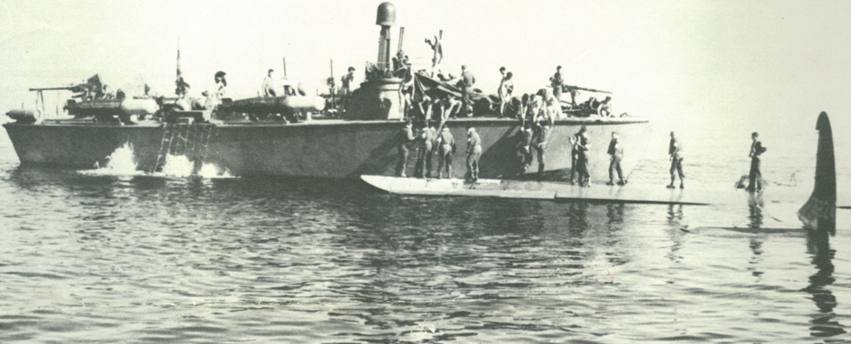 |
|
| "During the invasion of Southern France, one fully loaded glider, accidentally released from the towing plane, hit the water with a splash and floated with the wing above water. On board PT 562, which was standing by during the rescue operation, Seaman 1st Class Michael Kalausky took this picture."
From Johnson's book:
"Luckily someone had a camera! During the invasion of Southern France a fully loaded glider was accidently released from its tow plane too far our to sea to make the shore. The pilot managed to ditch the glider without serious injury to his passengers, and the wooden aircraft obligingly stayed afloat until two Higgins boats arrived on the scene. Aboard PT-562 seaman first class Michael Kalausky watched as the accompanying boat rescued the waterlogged troops."
I'm assuming these captions reflect Kalausky's memory of the incident. |
|
| The PT Boat Association included photocopies of some of the pictures above and these two photographs, one taken on board the 209 showing a trooper being pulled aboard, the other shows Pistol Packin' Mama alone in the sea. I've included them here temporarily until I can request proper copies from their archives. | 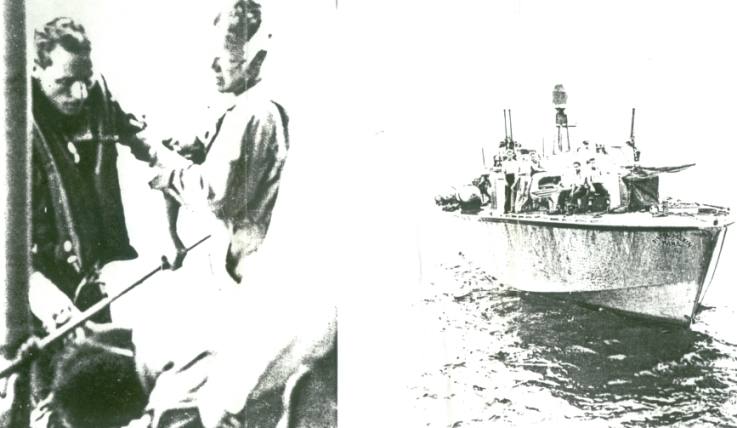 |
|
|
|
